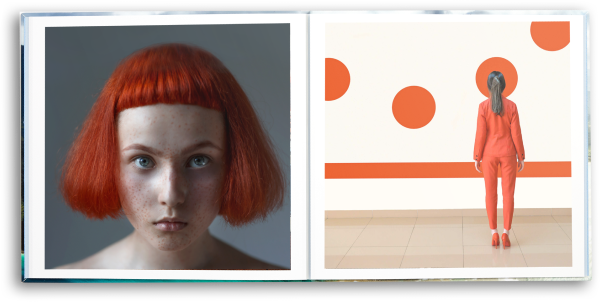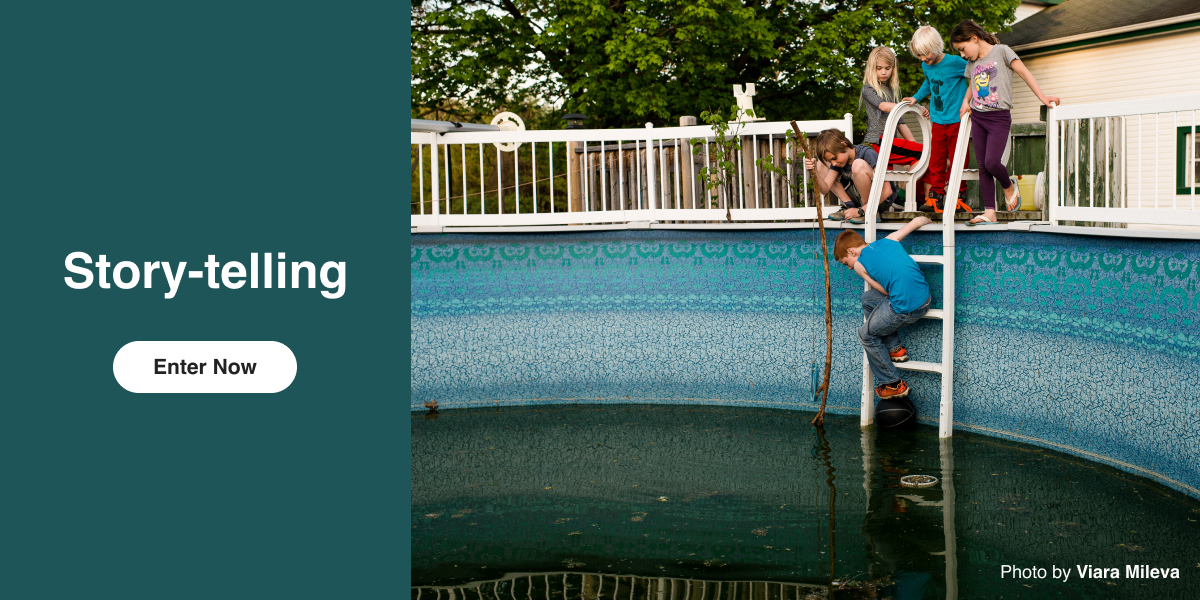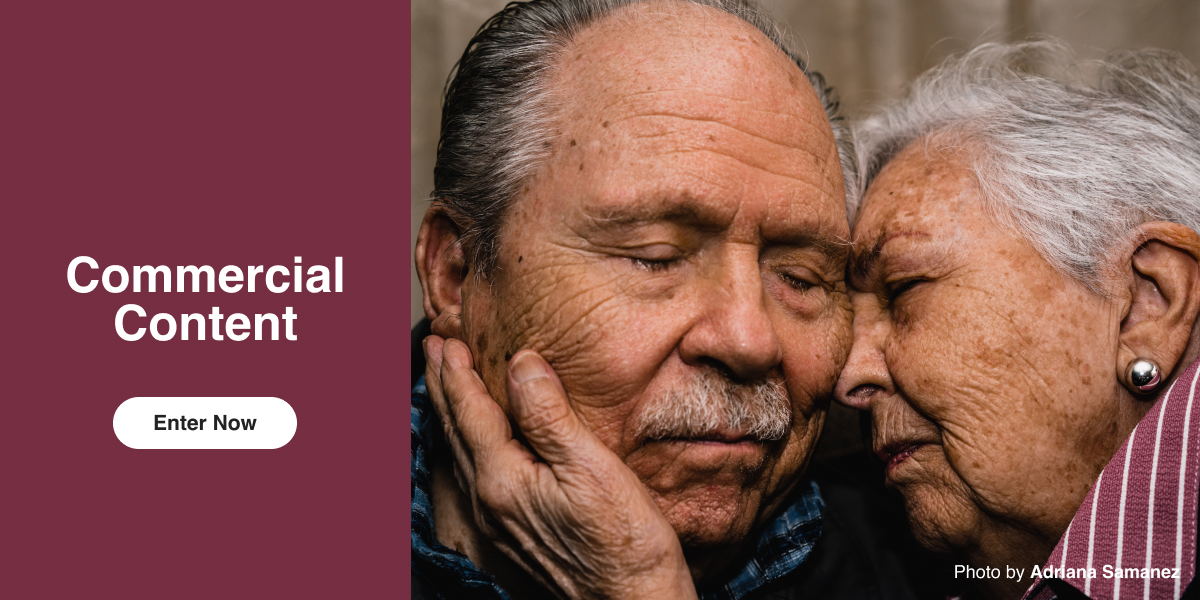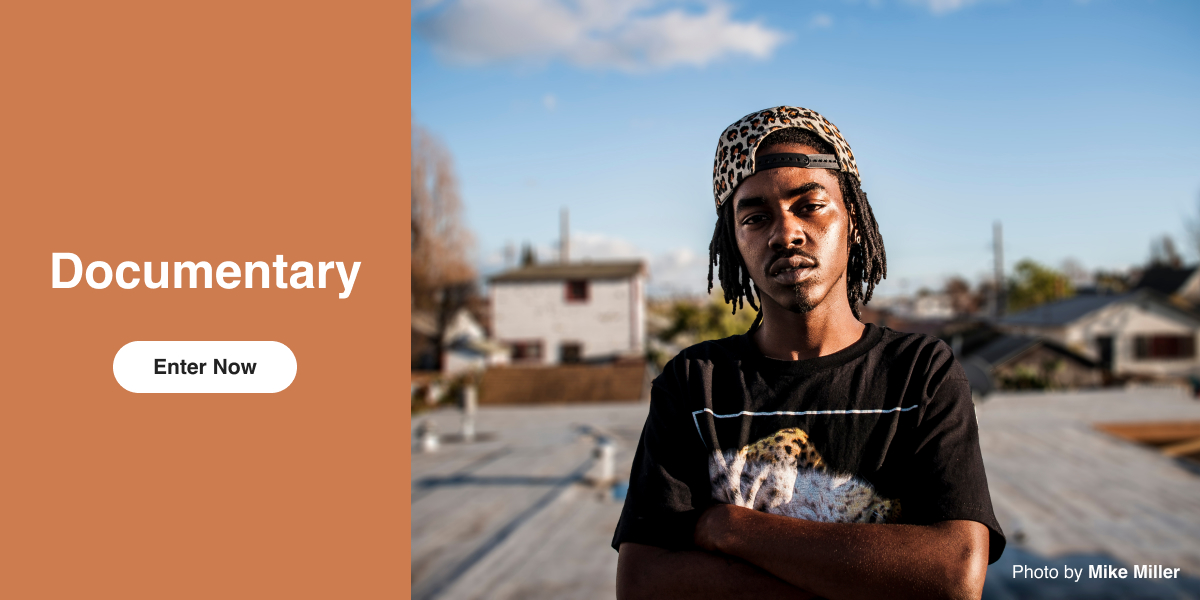
[NDN/ccn/comedia Links]
More than one in four (26%) adults in the United States have some type of disability. That’s an estimated 61 million people. But research from Nielsen, released in 2021, reveals that only 1% of primetime ads include representations of disability-related visuals, themes, or topics. What’s more, just 3% of advertising spend in primetime went to disability-inclusive themes.
Ads for pharmaceuticals, healthcare products and treatments, and similar subjects accounted for 50% of disability-inclusive ads, underscoring the absence of representation across a variety of categories, industries, services, and products.
A separate study, conducted by Getty Images, found that fewer than 2% of widely-used images included people with disabilities. In those, people with disabilities were frequently depicted in caregiving or medical situations, rather than being portrayed in their day-to-day lives.

In recent years, there have been a few notable exceptions in the advertising landscape. One of them was Microsoft’s 2019 Super Bowl campaign, We All Win, featuring young video gamers using the Xbox adaptive controller.
Another prominent campaign came from the fashion world: ads for the Tommy Adaptive collections by Tommy Hilfiger feature disability influencers and athletes with disabilities. One of their campaigns featured a film that was directed by James Rath, a creator and advocate who was born legally blind.
Elsewhere, Jillian Mercado, an actor and model who happens to have spastic muscular dystrophy, lit up Times Square in a beauty ad for Olay. More recently, a 2022 Super Bowl ad from Google Pixel featured disability representation advocate Angel Giuffria.
Just this fall, the lingerie brand Liberare teamed up with the period care brand August to highlight the experiences of a model, brand ambassador, and community member with disabilities; behind-the-scenes footage from their joint campaign racked up millions of views on TikTok.
Social media, in general, has also helped foster a grassroots movement toward better representation, with influencers and filmmakers with disabilities leading the charge and changing the game. Inclusive talent agencies like Zebedee Talent have helped change the way disability is portrayed in fashion and advertising (they represent models and creatives alike).
Commercial stock photographers can join the movement by telling firsthand stories from their own communities, taking a person-first approach, and inviting collaboration.
Disabilities can be visible or invisible, and they affect everyone, across all ages, backgrounds, genders, and identities. All models—of all abilities—can and should have ownership and control over how they’re represented, so have some brainstorming sessions beforehand to get to know them. Consider their interests, passions, and hobbies and how you could incorporate them on set.
A simple question like, “How do you want to be photographed?” can go a long way. Maybe you also include family members, romantic partners, friends, and colleagues, documenting a day in the life of your model. Depending on your team, perhaps you can invite them to collaborate by sharing images they love for your mood board, or ask them to develop some ideas through storyboarding.
It’s also important to avoid common stereotypes, such as showing people with disabilities as “victims” or “heroes.” People with disabilities aren’t here to “inspire” people without disabilities. Your photos should tell the story of the whole person; disability might be a part of that story, but it shouldn’t be the only focus. It doesn’t even have to be a primary focus.
The activity, emotions, and environment are all significant aspects to include, whether your models happen to have a disability or not. Good storytelling begins with collaboration and listening, so the better you get to know your team, the stronger your images will be.
Finally, having different perspectives behind the camera is also crucial, so collaborate with a team of creatives with various abilities and skill sets, from the very beginning stages of a photoshoot. The term “nothing about us without us” remains key, so listening to disability advocates and activists is crucial.
Authentic images start with accessibility, so take the time and do your research to ensure your set, whether it’s a studio, home, or outdoor location, is accessible to everyone. That can include ensuring that parking spaces are close to entrances or that lifts or ramps are available. Make sure locations are clearly marked and directions are provided in advance.
Accessibility could also mean being mindful of any sensory processing concerns among your team; flash photography, for example, could cause problems for some people on set. Natural lighting is a great solution. Smaller groups and photoshoots can also be helpful when avoiding sensory overload, as can quieter locations without too much background noise.
Another thing to consider is timing; ask your team about how and when they’d like breaks and how long they’d prefer the shoot to last. Be flexible; some shoots might require extra time, while others might work best if they’re on the shorter side. If you’re bringing snacks, be mindful of everyone’s needs. It can also help to send a detailed schedule and plan so that your team can know what to expect; they can also weigh in on any adjustments you’ll need to make on the day of the shoot.
Once you’re on set, adjust your approach to your models. Providing visual references and written information or demonstrating your ideas can also be part of your communication toolkit. Keep the lines of communication open, and check in with each other throughout to creative process.
Remember to educate yourself to learn basic etiquette; this guide from the College of Applied Health Sciences at the University of Illinois at Urbana-Champaign offers a starting point. Respect and mutual give-and-take should always form the foundation of your shoot.
Part of ensuring your Licensing portfolio is accessible to everyone is thorough keywording and captioning, so take the time to be as clear, concise, and descriptive as possible. In general, it’s good practice to use fewer words while still conveying all the essential information contained within your photographs. Where applicable, include alt text to help make your visuals more accessible.
When keywording, language matters. As a general rule, stick to person-first language: for example, use “person with paraplegia,” not “paraplegic.” Additionally, steer clear of patronizing language like “differently-abled” or negative language like “handicapped.” A person who uses a wheelchair is a “wheelchair user,” not “wheelchair-bound.”
While there are some general guidelines, everyone is different, and we all use different language to describe ourselves. For that reason, it can be helpful to have your models and collaborators contribute and suggest keywords themselves. Give them the opportunity to have ownership and authorship over their images.
Last year, research from Getty Images revealed that “72% of global consumers expect brands they buy from to support diversity and inclusion, with 80% loyal to brands whose business practices support their own values.” Those numbers are even higher among younger consumers.
For inspiration on future shoots, you can check out their Disability Collection, created in partnership with Verizon Media and the National Disability Leadership Alliance. Then look to your community, locally and on social media, to find stories worth sharing with the world.
Not on 500px yet? Click here to learn about Licensing with 500px.
The post Shining light on disabilities in your commercial shoots appeared first on 500px.
[NDN/ccn/comedia Links]12 Days, 12 Quests, 12 Prizes, and over 126,000 submissions!
With 12 Quest Themes that covered all the bases from Minimalism to Portraiture, Wildlife to Editorial…. There was something for everyone and amazing prizes to be claimed. It was a difficult decision as our community delivered their Questms spirit (yet again!) but our editors and judges were able to decide on the winning images after much deliberation and we’re excited to reveal them.
Congratulations to all the winners, and thank you to everyone that submitted to the 4th edition of Questmas. Stay tuned for more Quests in 2023!
Photo by: Michal Zahornacky
Prize Details: 28mm f5.6 Lens by TTArtisan
Check out all the ‘Minimalism’ shortlisted photos
Photo by: Tyler McAuley
Prize Details: $300 US in Long Weekend Gear
Check out all the ‘Petography’ shortlisted photos
Photo by: Karol Nienartowicz
Prize Details: Hadley pro 2020 Camera Bag by Billingham
Check out all the ‘Nature’ shortlisted photos
Photo by: Lisa-Marie McGinn
Prize Details: Classic Filter Kits by Fractals
Check out all the ‘Editorial’ shortlisted photos
Photo by: Alberto Agnoletto
Prize Details: ProTactic BP 350 AW II Camera Bag by Lowepro
Check out all the ‘Aerial’ shortlisted photos
Photo by: Mike Tesselaar
Prize Details: Brian 2.0 Carbon Fibre Travel Tripod by 3 Legged Thing
Check out all the ‘Travel’ shortlisted photos
Photo by: Veronika Christos
Prize Details: Moza Slypod Pro by Gudsen Moza
Check out all the ‘Monochrome’ shortlisted photos
Photo by: Dario Maschietti
Prize Details: Tripod Kit by Gitzo
Check out all the ‘Wildlife’ shortlisted photos
Photo by: Grzegorz Bukalski
Prize Details: AD100Pro Creating Kit by Godox
Check out all the ‘Portraiture’ shortlisted photos
Photo by: Natalie Seitner
Prize Details: Rotation 22L Backpack by ThinkTank Photo
Check out all the ‘Conceptual’ shortlisted photos
Photo by: Tamer Radwan
Prize Details: Alpha Globetrotter XC Camera Backpack by Langly
Check out all the ‘Architecture’ shortlisted photos
Photo by: Jonas / Bildmedia
Prize Details: 055 Aluminum 3-Section Tripod Kit by Manfrotto
Check out all the ‘Urban’ shortlisted photos
Once again, congratulations to all the winners, and thank you to everyone who submitted their photos to Questmas 2022!
The post Questmas 2022 Winners Revealed appeared first on 500px.
[NDN/ccn/comedia Links]In October, in anticipation of the holiday season, Ritz revealed a new holiday campaign celebrating the diversity of traditions that define this time of year. The brand also partnered with Bon Appetit to create a recipe book and videos showcasing different cultural moments, passed down from one generation to the next among immigrant families in the United States.
In recent years, brands across industries have reminded us that representation and inclusion in advertising make a difference, especially around the holidays. Last year, Target focused on traditions, new and old, as part of a campaign featuring families celebrating Thanksgiving/Friendsgiving, Diwali, Hanukkah, and Christmas, all united by shared experiences and joy.
In 2022, it’s not enough for marketers to rely on stereotypical portrayals of the holidays; instead, today’s consumers crave advertising that reflects their own, lived experiences. For that reason, it’s vital for commercial photographers around the world to tap into their local communities and tell real, relatable stories that have historically been underrepresented in the commercial realm.
Whether it’s creating rangoli for Diwali, gathering marigolds for the Day of the Dead, eating puto bumbong for Christmas, making sufganiyot for Hanukkah, or lighting the Kinara for Kwanzaa, every family and every community has its own traditions.
Do some research into the events and celebrations observed in your neighborhood. Reach out to friends (and friends of friends) to see if they have holidays they’d like to share through photography, or put an open call for models out on social media. These are important memories, so many families will be happy to have them documented.
Once you connect with your models, ask them about their personal traditions: DIYing decorations, cooking a traditional dish, sharing stories, singing songs, and so on. What are their favorite holiday moments, and what do they wish they saw represented more in advertising? These questions will provide a solid point of departure for you to start building your shot list.
Marketers start looking for visuals to use in their campaigns well before the holiday season, so be prepared and have your photos uploaded before they start searching. Keep a calendar with key dates you want to incorporate throughout the year, whether it’s the Lunar New Year after the winter solstice, Holi to mark the beginning of spring, Easter around the spring equinox, or Mardi Gras just before that.
Think about the lesser-known holidays as well as the major ones. You can highlight Midsummer celebrations, St. Patrick’s Day gatherings, New Year’s kisses, and Valentine’s day dinners—or you can raise awareness for World Water Day or International Women’s Day. You can capture your self-care routine for World Mental Health Day or highlight sustainable living for Earth Day. Feel free to think outside the box.
“You can start shooting upcoming events early, plan for others, and try to recreate holidays when possible,” the 500px team explains. Coordinate with your models to see what works.
When creating your shot list, consult your models! They might have ideas for photos that are meaningful for them—and will be meaningful to others—even if you haven’t thought of them. If you’re photographing a holiday you aren’t familiar with, research is even more important, so study the traditions and key moments, and then ask your models to weigh in themselves. You want to document how they celebrate, as authentically as possible.
Be mindful, too, of moments when you shouldn’t bring out your camera; for example, many holy places, including some temples, are photography-free zones. If you’re unsure, ask ahead of time. By doing your research and understanding the nuances of an event, you’ll be better equipped to understand what you can and cannot photograph. Respect for the family and the tradition they are observing should always come first.
Quick tip: Your models can also help you come up with keywords for inspiration, and you can later use those same keywords when tagging your photos to make them more visible to buyers.
Make the most of the time you have with your models by incorporating an array of their holiday traditions. Borrow decorations, or shop for some of your own to create more variety and interest in your shots. Consider different wardrobe options, colors, and textures.
Try to include diverse models, from family to friends, young and old, united under the same roof under the spirit of togetherness. Some might be new to the holiday, while others might be passing down their knowledge to the people closest to them. Include multiple themes in your shot list, such as gift-giving, decorating, cooking, and more. Perhaps you can even incorporate trending themes and movements like environmental sustainability.
Finally, think about various locations you can include to help tell a larger story: the living room, the backyard, the dining room, and so on. It could even be a public place like a park where the family sets up a festive picnic. When shooting in someone’s home, remember to get those property releases signed by the owner in advance. The more diverse your shoot, the more versatile your portfolio will be.
Finally, stay in touch with your models about future shoots to mark future holidays. A one-time session can turn into an ongoing collaboration.
This tip is simple but easily overlooked: if you plan to submit your photos for Licensing, you need to avoid any branded designs or logos. That includes packaging for ingredients, logos on kitchen appliances and clothing items, and design elements on tech devices such as phones or computers. Touch base with your models, and help them select wardrobe and prop items that’ll work for the shoot. If a branded element slips through the cracks, you might be able to edit it in post-production, but planning ahead will save you the hassle.
In 2021, the Creative Insights Team at Getty Images noted that photographs celebrating Ramadan can (and often do) depict themes relating to food (searches for “Ramadan Food” increased by 101% the previous year). But true representation also means digging deeper and showing the bigger picture, and the team urged readers to “depict other aspects of the holiday, such as charity work and spiritual reflection.” Plus, everyone celebrates Ramadan differently, depending on their culture and where they live.
Within almost any holiday, there is no such thing as a “monolithic” experience, so take the time to learn about your models, the history of their traditions, and why they’re important. By personalizing your session to the people you’re working with, you’ll create a more nuanced portrait of the holiday. Those are the stories that break barriers, challenge stereotypes, and resonate with us all.
Not on 500px yet? Click here to learn about Licensing with 500px.
The post Capturing holidays around the world appeared first on 500px.
[NDN/ccn/comedia Links]Your stand-out images might be all it takes for you to win $2000 US, earn the title of 500px photographer of the year and so much more! Our annual photography awards are now open for submissions and we’re looking for the best of the best.
This year’s 500px Global Photography Awards has upped the ant; increasing our category options that you can submit to and offering even more prizes.
How to Enter
Review the 6 categories that you can enter (at no charge to you) for this year’s awards. Once you’ve familiarized yourself with what our editors will be looking for revisit your archive of images taken in 2022 and cull them with intentionality. You can submit images that you’ve uploaded to the 500px site since January 2022 or upload new work to your profile and submit them.
When choosing what to submit try and be unique and submit those eye-catching images that can’t be missed by our team of editors.
The Prizes

These awards were launched to continue our mission to support creative talent and inspire photographers around the world. Our editors meticulously review all submissions and work hard to increase the visibility of images that demonstrate technical excellence and creativity.
Giving yourself certain creative restrictions or looking through your photography archives with specific requirements can push you to create/find some of your best work.

Let’s get technical. That means sharp and in-focus, intentional manipulation of textures, and spacing of subjects. When done well these images often feel easy but they are the furthest thing from. Successfully achieving a technically perfect image means mastering light, shapes, and more.

Submit your images that create an arch that makes viewers wonder what came before and what will come next.
When it comes to storytelling a common mistake is to overcomplicate the elements within the frame. However, this isn’t necessary, what will make it a stand-out image is that the narrative is clearly communicated and drives the audience to want to know more.

Submit your images taken with the intention to sell, advertise or market a business, a product, a service, a person, or persons.
Commercial content allows brands and small businesses to connect with their audience and is relatable and authentic when done successfully. Images that will stand out feel genuine and are able to resonate with viewers as they see themselves reflected in some way.

Submit your images that chronicle the world around us in a realistic and honest manner.
Documentarians help shape history. They tell the story of the underdog or the hidden narratives, they expose rich cultures and help awaken society to necessary change. The moment documented can be a moment that can be interpreted as simple but through the lens it becomes complex.

Submit your images created as a means of expression, with an undeniable imaginative and aesthetic quality to them.
Fine art photography doesn’t hold you back, it’s expressive and full of creative spins on the world around us. Whether by using props or post-production manipulation of colors, grain, or more. Imagination is a strong weapon and delivers striking imagery.

Submit your images that capture the spaces within the world, both vast and untouched terrains or environments.
Landscape photography is one of the most diverse genres, there are a plethora of landscapes that can be captured and each location can be captured in intriguing ways depending on the time of day or vantage point. Nature is magnificent and cameras have a special way of articulating that.
ENTER THE 500px GLOBAL PHOTOGRAPHY AWARDS
The post The 500px Global Photography Awards 2022 appeared first on 500px.
[NDN/ccn/comedia Links]